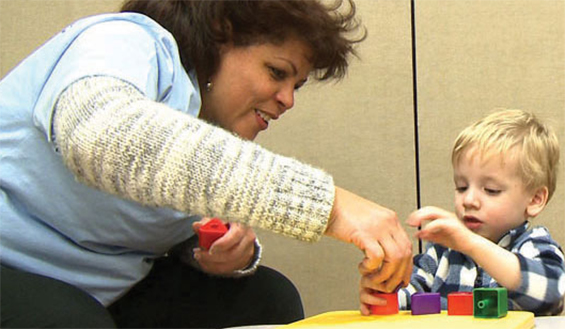
A new federal study has found that as many as one in 45 children in the US suffer from autism spectrum disorder (ASD), revealing that the count of diagnoses appears to be underestimated. The CDC’s National Health Interview Survey (NHIS) administered in 2014 showed that over 2.2% of the nation’s children between the ages of three- and 17 years-old have autism.
Rhodie Lee of Tech Times reports that from 2011 to 2013, the NHIS discovered that autism affects only 1.25% of young people. The CDC then estimated a prevalence number of 1.47%, or one in 68 individuals.
One suggestion as to why the number has increased so significantly, says Katherine Walton of Ohio University, could be that parents are using different labels now when they describe their children.
The number of children diagnosed with developmental delays decreased. The total number of youngsters who were found to have developmental disabilities remained the same at 5.75%.
“What we call an autism spectrum disorder now is a much wider group of symptoms than what we called autism in the past so I think that captures a larger number of children that might have received other diagnoses in the past,” Walton said.
The study’s author, Benjamin Zablotsky of CDC’s National Center for Health Statistics, added that there might have been changes in the way parents label their kids that could be because of variations in the way researchers interviewed the parents.
An example of that is surveyors in 2011 to 2013 asked parents if a doctor had diagnosed their child as having an intellectual disability. After that, the parents were asked if their child had any other developmental delays. Parents were required to pick any additional illnesses their child had experienced from a provided list of conditions such as arthritis, autism, and diabetes and tell the researchers which, if any, maladies their child had.
The new study, however, does not include autism in the list of conditions but asks specifically about ASD. The change may have resulted in some parents who might have chosen “other developmental delays” to designate an ASD diagnosis instead.
Maggie Fox, writing for NBC’s Today, reports that doctors are unquestionably changing the manner in which they diagnose autism, and at the same time parents are seeking diagnoses for their children more often than they have in the past.
“One in 45 is what we think is the most accurate parental report of autism to date. I think within this report we found that the way that we ask the parents about autism spectrum disorder can have an impact on the way the parents respond to the question,” said Zablotsky.
The buzz in the US has been that more kids are developing autism, so there must be something happening to make the rise occur — but experts are saying that it is more likely that autism is being recognized and diagnosed more frequently. Zablotsky says:
“We feel we are asking the question in a better way than before.”
Although the number seems high, Michael Rosanoff, director of public health for the advocacy group Autism Speaks, says it’s proof that the prevalence of autism has been under-reported in the US.
The study also found that children with autism had high rates of conditions along with the ASD diagnosis. The most common was a learning disability, which affects 62.6% of kids with autism. Next is ADHD at 42.8%.
Approximately 14% need personal care assistance, 9.1% have trouble hearing, and 7.3% have eyesight problems. Up to 60% receive special education or early intervention support.
Most autistic children are male, non-Hispanic white, living in large metropolises, with two parents and at least one parent who has more than a high school diploma, says The Washington Post’s Ariana Eunjung Cha.
Robert Fitzgerald, an epidemiologist in psychiatry at the Washington University School of Medicine in St. Louis, who was not involved in the research, said that the stigma of having autism has decreased. Doctors might have been hesitant to give kids the “autism” label, but with the increase in services and support for ASD young people, the general community has developed a different opinion of the condition.




